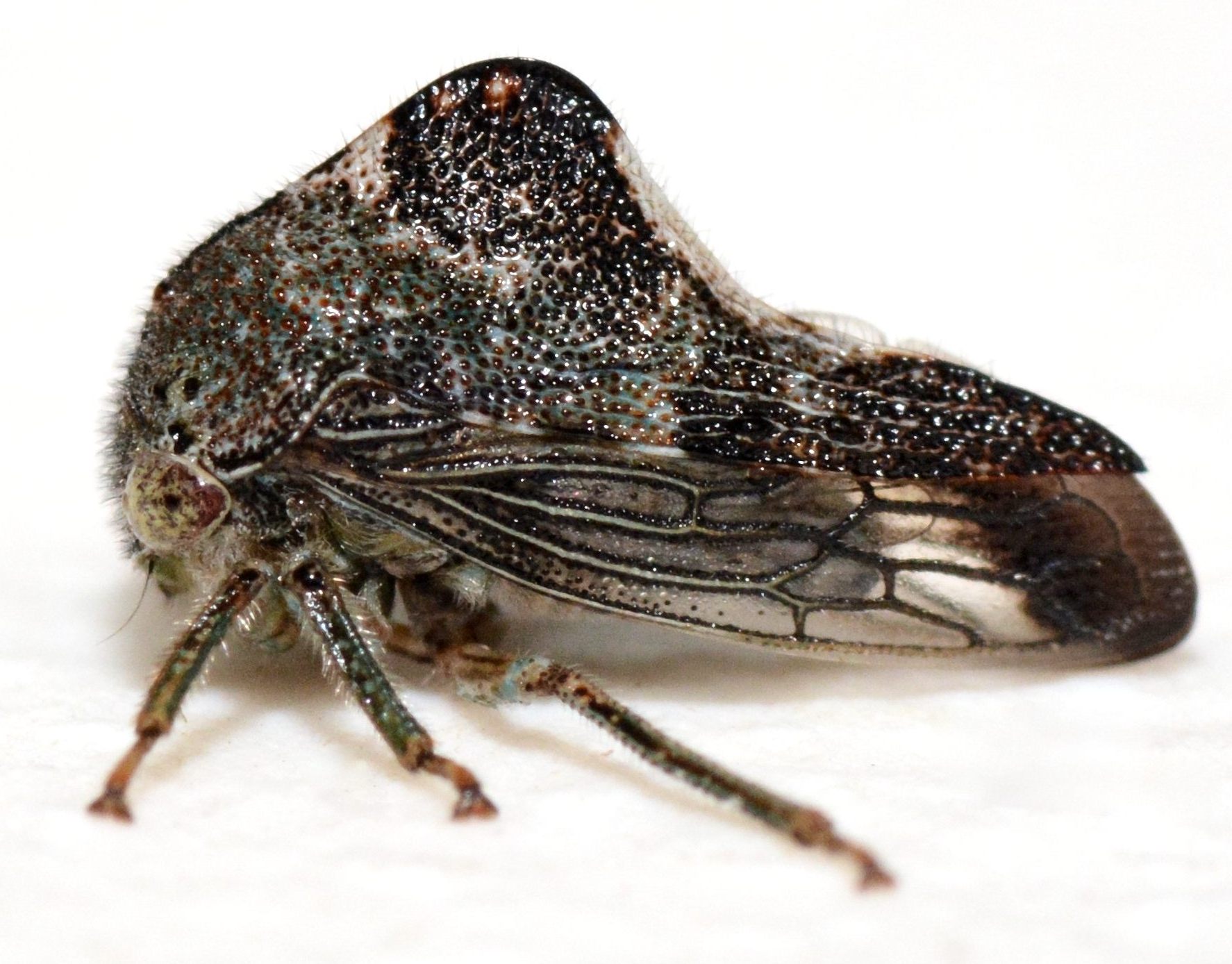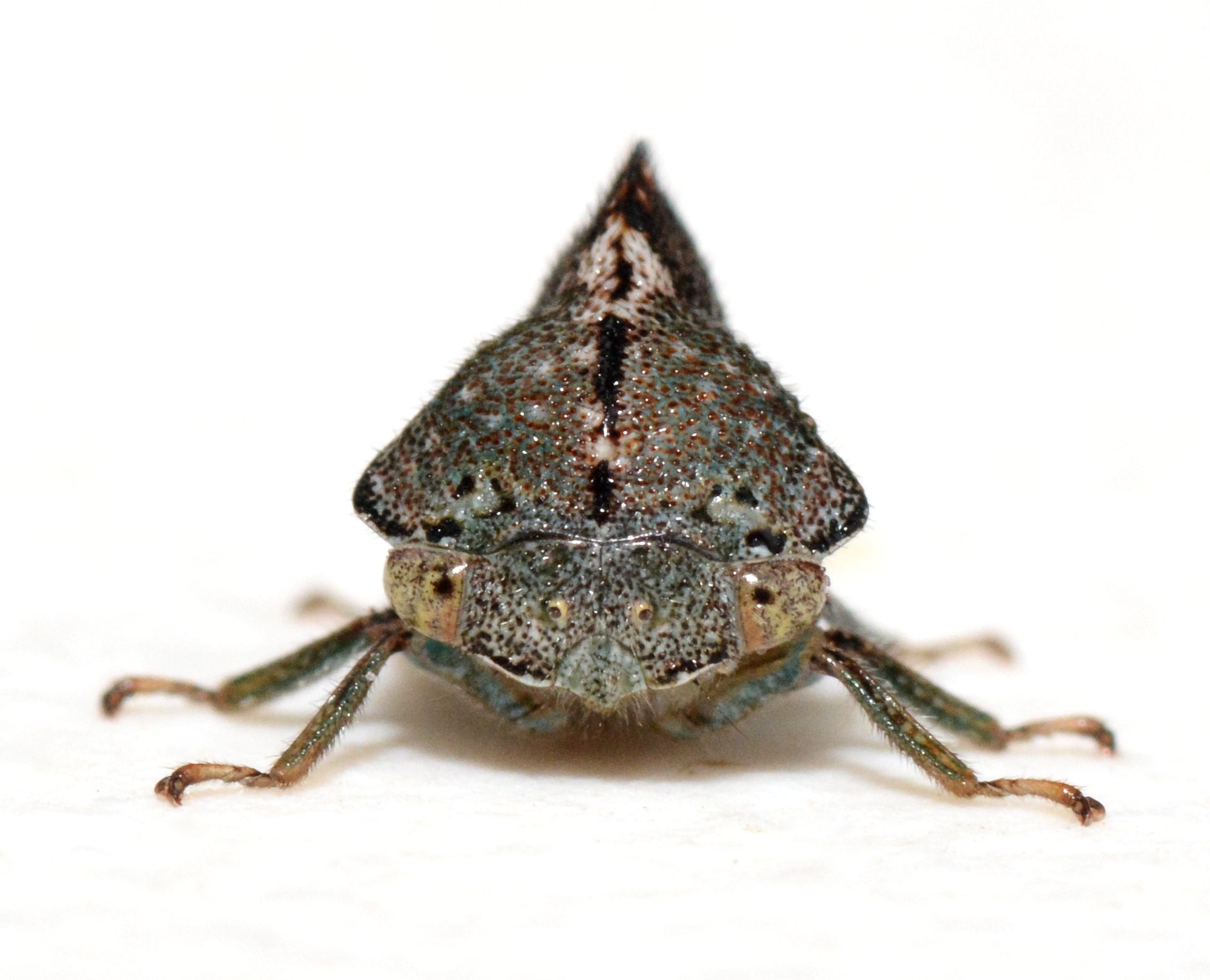
|
|
|
| synonym |
Telamona barbata |
| description |
A sexually dimorphic species. This species is grayish-green to reddish-brown overall, with a varied mottled color pattern of light and dark. This pattern is much more pronounced in females, whose crest is a vibrant dark brown to reddish-brown and is block-shaped; the crest coloration contrasts with the paler front and sides of the pronotum, with a curved dark band arching downwards from the crest towards the lateral edge of the pronotum. The tip of the female pronotum is a reddish to reddish-brown color. The male pronotal crest is smaller and not as high compared to other members of this genus and is more of a rounded triangular shape but, like the females, is dark. In both sexes, the trailing edge of the crest is pale. There is frequently some light pale speckling across the front of the pronotum. The tips of the wings are dark with a smoky smudge while the wing venation is pale, lined with dark; the rest of the wings are hyaline. |
| distribution |
Primarily Eastern and Central United States |
| abundance |
Recorded from the mountains, with a single [unusual?] record from the Coastal Plain. Seasonal distribution: 19 June-13 September (CTNC) |
| seasonal_occurrence | |
| habitat |
Montane |
| plant associates |
Castanea dentata (American chestnut), but largely oaks: Quercus alba, Q. rubra (CTNC); also Q. stellata (CTGSMNP), Populus (cottonwood) [nymphs on this plant], Tilia americana (American basswood), Acer (maple), Carya ovata (shagbark hickory), Q. bicolor (swamp white oak) [nymphs on this plant], Q. coccinea (scarlet oak), Q. ellipsoidalis (northern pin oak), Q. falcata (southern red
oak), Q. ilicifolia (bear or scrub oak) [nymphs], Q. macrocarpa (bur oak) [nymphs], Q. montana (chestnut oak), Q. phellos (willow oak), Q. velutina (black oak) [nymphs], and Robinia (locust) (Wallace 2014). |
| behavior |
Can be attracted at night with a light. |
| comments |
|
status |
[Native:]
[Introduced:]
[Extirpated:] | | list_type |
[Official:]
[Provisional:] |
| adult_id | Unmistakable and widely known Identifiable from good quality photos of unworn specimens
Identifiable from photos showing undersides, or other specialized views [e.g., legs, face]
Identifiable only by close inspection of structural features or by DNA analysis NULL |
| nymph_id | Unmistakable and widely known Identifiable from good quality photos, especially where associated with known host plants
Identifiable from close inspection of specimens or by DNA analysis
Identifiable only through rearing to adulthood NULL |
| G_rank |
|
| S_rank |
|
| rank_comments |
|
| tribe |
Smiliini |
| subgenus |
|
Species Photo Gallery for Telamona decorata No Common Name |
 | Photo by: Matthew S. Wallace
Out Of State Co.
Comment: | 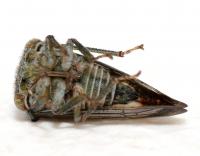 | Photo by: Kyle Kittelberger
Out Of State Co.
Comment: male |
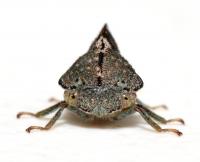 | Photo by: Kyle Kittelberger
Out Of State Co.
Comment: male | 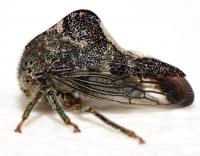 | Photo by: Kyle Kittelberger
Out Of State Co.
Comment: male |
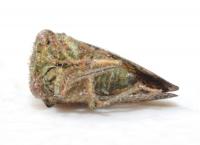 | Photo by: Bo Sullivan
Carteret Co.
Comment: male, photographed by K. Kittelberger; collected at UV trap |  | Photo by: Bo Sullivan
Carteret Co.
Comment: male, photographed by K. Kittelberger; collected at UV trap |
 | Photo by: Ken Kneidel
Yancey Co.
Comment: forest edge, 2900 ft | 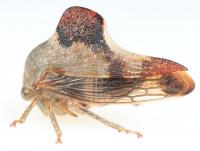 | Photo by: Graham Montgomery
Out Of State Co.
Comment: probable female |
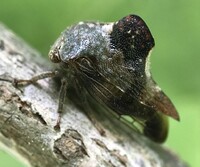 | Photo by: Ted Wilcox
Watauga Co.
Comment: unid_treehopper |  | Photo by: Ted Wilcox
Watauga Co.
Comment: unid_treehopper |
 | Photo by: Marilyn Westphal
Henderson Co.
Comment: On UV light sheet |

 »
»